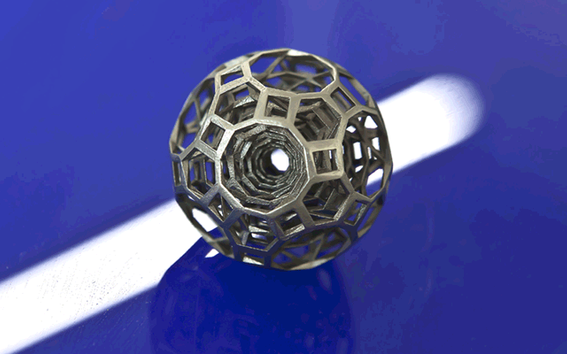Spare parts go digital: a boost for the industrial spare parts business

Digitalisation will also enable individual customisation and an increase in the intelligence of parts.
A two-year project involving companies, and led by VTT Technical Research Centre of Finland and Aalto University, investigated how businesses can gain a competitive advantage from digital spare parts.
Spare parts and all of the related information can be stored and transferred digitally. Availability increases when a new spare part can be 3D-printed according to need, close to the end user.
“Industry now has every opportunity to boost business by making spare parts into a focus area of development. Around five percent of parts can currently be manufactured digitally, according to need. 3D printing technology has reached the stage where high-quality manufacturing is possible,” says Sini Metsä-Kortelainen, VTT’s project manager for the project.
Big production plants maintain large spare-part warehouses, where a vast number of parts wait for long periods before being used.
“Capital is released for more productive use when stock decreases. Demand-based manufacturing also reduces the environmental burden, because spare parts are not left unused. Another major opportunity lies in reducing downtimes through faster spare-part manufacture,” says Mika Salmi, project manager of the project for Aalto University.
The research project found that digital spare parts are particularly appropriate in the case of extremely old or rarely needed parts, the warehousing or availability of which would not be viable. “We have a lot of individual items and are keenly awaiting the new flexibility and speed 3D production will bring,” says Petri Strengell, Group Vice President of Raute.
The challenge is digitizing of parts
Manufacturers are already using 3D printing in product development and, to an increasing extent, in the production of spare parts. However, most spare parts are designed for manufacture by traditional methods – information that would enable their direct 3D printing is unavailable. The challenge lies in identifying 3D-printable parts from spare part libraries and arranging the data in such a manner that all other manufacturing information is available in addition to 3D models. The automotive industry is the first sector to engage in digitalisation.
The project also involved the development of concepts for the future. Digital manufacturing enables the customisation of parts as needed, making countless numbers of product versions or upgrades possible. In addition, various identifiers or sensors can be added to spare parts during manufacture, enabling the functioning of machines and equipment to be monitored or parts to be authenticated. If a spare part is equipped, say, with a wear sensor, as it wears the part can even initiate the manufacture of a replacement itself.
Valued at around EUR 1.4 million, the project forms part of Tekes’ Industrial Internet programme. Launched at the beginning of 2016, the project is funded by Tekes and the participating research organisations and companies: 3DTech Oy, ABB Oy Drives, AM Finland Oy, Hetitec Oy, Kone Corporation, Laserle Oy, Materflow Oy, Grano Oy, Patria Aviation Oy, Raute Corporation, Rolls-Royce Oy Ab, Sacotec Components Oy and Wärtsilä Finland Oy. The Finnish Technology Industries Federation is a partner of the project.
Video: Digital spare parts!
https://youtu.be/2G4cmHl1nuw
For further information, please contact:
VTT Ltd
Sini Metsä-Kortelainen, Project Manager
+358 40 5257 815, [email protected]
Pasi Puukko, Project Leader Responsible
+358 40 5251 684, [email protected]
Aalto University
Mika Salmi, Project Manager, Aalto University
+358 50 512 2746, [email protected]
Jouni Partanen, Professor, Project Leader Responsible,
+358 50 576 9804, [email protected]
Read more news

Get to know us: Associate Professor Maria Sammalkorpi
Sammalkorpi received her doctorate from Helsinki University of Technology 2004. After her defence, she has worked as a researcher at the Universities of Princeton, Yale and Aalto.
Aalto computer scientists in ICML 2024
Computer scientists in ICML 2024
Getting bacteria into line
Physicists use magnetic fields to manipulate bacterial behaviour